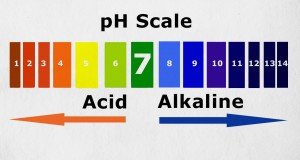Cancer patients need to know: What is DCA and can it effectively target cancer cells
(NaturalHealth365) If you or a loved one has cancer, you may have heard of a cheap, yet effective substance called DCA.
DCA stands for dichloroacetate and it has been used for decades for rare non-cancer conditions. Since 2007, however, it has also shown promise for its ability to target cancer cells, including breast cancer cells, while leaving healthy cells unharmed.
But DCA does not come without some health risks that you should know about.
Step one: Understanding what is dichloroacetate, or DCA?
DCA is actually a man-made substance. It is a byproduct of water chlorination and its foundational chemical is a compound typically used for solvents and adhesives called trichloroethylene (TCE).
TCE in itself is definitely not a benign substance. It is “known to carry risks of central nervous system disturbances and liver and kidney damage,” according to the World Health Organization.
So why consider something that comes from such a dangerous chemical like TCE for breast cancer?
Basically, because DCA works – and works very effectively – at targeting cancer cells. And while there are some side effects, in most individuals (but not all) they are relatively mild.
Here are just a few studies that confirm the effectiveness of DCA:
- A 2009 study published in the research journal Breast Cancer Research and Treatment found that DCA reduced tumor growth in metastatic breast cancer both in the lab and in animal models.
- A 2008 study conducted by the University of Florida used DCA (in conjunction with radiation) on prostate cancer cells. The researchers concluded that “DCA alone produced significant cytotoxic effects.” DCA administration also made the radiation protocols more effective.
- In 2007, the University of Alberta published an animal study which found a 70% decline in lung, breast and brain cancer over the course of just three weeks. Healthy cells were left untouched. Another 2007 investigation by Harvard Medical School showed similar result for endometrial cancer cells.
One more reason an increasing number of people are considering DCA is cost. DCA is unique in that, although it is a pharmaceutical drug, research into its effectiveness has never been sponsored by big pharma.
It is truly the “underdog” when it comes to research funding, and most DCA studies have taken place because of grassroots interest in protocols that use it. Studies on DCA, such as the ones mentioned above, have thus remained small.
DCA effects the unique way cancer cells obtain energy, or “fuel” for their survival
While healthy cells get their fuel through a process called cellular respiration, which requires oxygen and takes place in the mitochondria, cancer cells obtain fuel through an entirely different mechanism. In a process called glycolysis, energy conversion in a cancer cell takes place in the cytoplasm. It does not require oxygen.
Healthy cellular respiration also requires a substance called pyruvate (a.k.a. pyruvic acid). In order for the cells to access pyruvate it must first pass the enzyme pyruvate dehydrogenase kinase (PDK).
This enzyme is important because it decides how much pyruvate can reach the mitochondria of each healthy cell. When PDK is “active,” the mitochondria are put to sleep and the cells rely on glycolysis for energy conversion.
How does this relate to cancer tumors and metastasis? You guessed it. Cancer cells have very active PDK. They love sugar and want to utilize the process of glycolysis as much as possible for their fuel conversion.
Here is the punchline: this whole process relates to the effectiveness of DCA in that DCA can suppress the processes of PDK, kicking cellular respiration through the mitochondria, turning off glycolysis and, in effect, instigating apoptosis, or cancer cell death.
Warning: DCA does come with some side effects
Although the side effects of DCA are mild in comparison to traditional cancer treatments, it does come with quite a few.
The fact that DCA is a small molecule which can be absorbed by the body quickly is a blessing and a curse. While this allows it to work rapidly against cancer, it can also lead to rapid side effects as well, especially those that target the brain and the nervous system.
The typical protocol for those with cancer includes special ratios of DCA, caffeine and B1 vitamins. Even with this protocol, some individuals may experience the following:
- Peripheral neuropathy
- Ankle swelling
- Frequent urination
- Mild nausea
- Anxiety and depression
- Dizziness
- Hand tremors
- Sleepiness
- Respiratory issues
DCA has also been found to be unstable in high temperatures, like when taken in conjunction with hot foods and beverages. Finally, DCA was found in a few studies to actually reduce cancer cell death, although the mechanism for why that occurs, in some cases, remains unclear.
The jury is still out regarding whether DCA’s effect on cancer is worth the possible side effects.
Still, DCA remains a low-cost option for targeted tumor reduction and is one that you should know about. My overall recommendation is before you dive into a DCA protocol, try out natural modalities if possible, such as sulforaphanes or fermented soy, instead.
These substances can potentially target cancer stem cells, reduce tumors and prevent cancer spread. These natural protocols also come with no side effects whatsoever except for great health!
About the author: Dr. Veronique Desaulniers (“Dr. V”) is a best-selling author and specialist in Chiropractic, Bio-Energetics, Meridian Stress Analysis, Homeopathy and Digital Thermography. After 30 years in active practice, she decided to “retire” and devote her time to sharing her personal, non-toxic Breast Cancer healing journey with others. Her years of experience and research have culminated in “The 7 Essentials™ “, a step-by-step coaching program that unravels the mystery of healing the body. Her website and personal healing journey have touched the lives of thousands of women around the globe. To get your F.R.E.E. 7-day mini e-course and to receive her weekly inspiring articles on the power of natural medicine – visit: BreastCancerConqueror.com
Sources for this article include:
NIH.gov
NIH.gov
NIH.gov
ScienceDirect.com
NBCNews.com
CancerLetters.info











